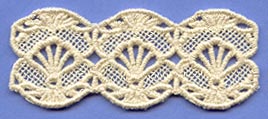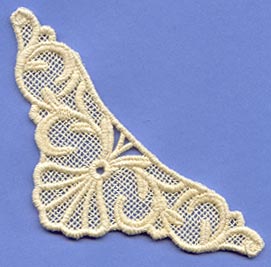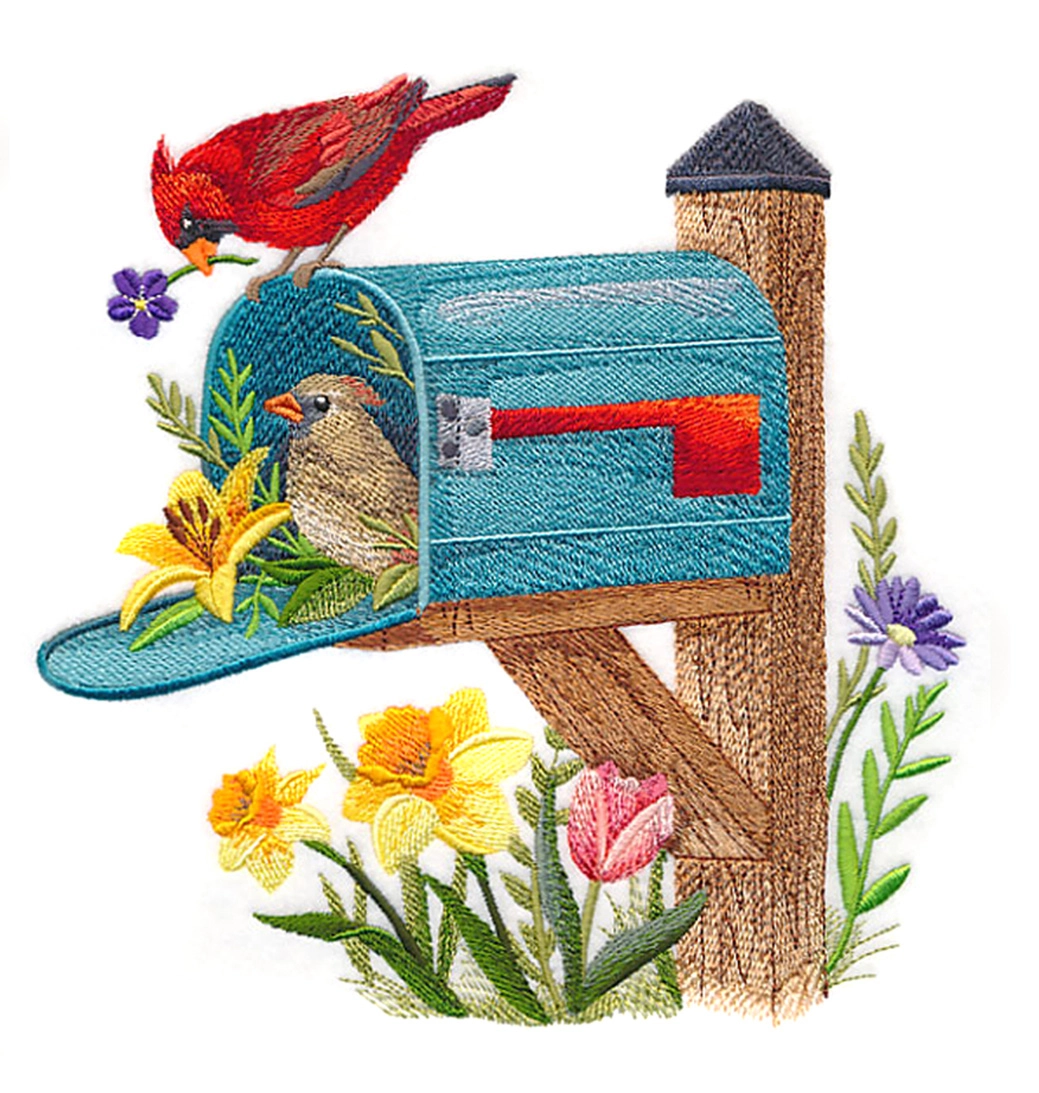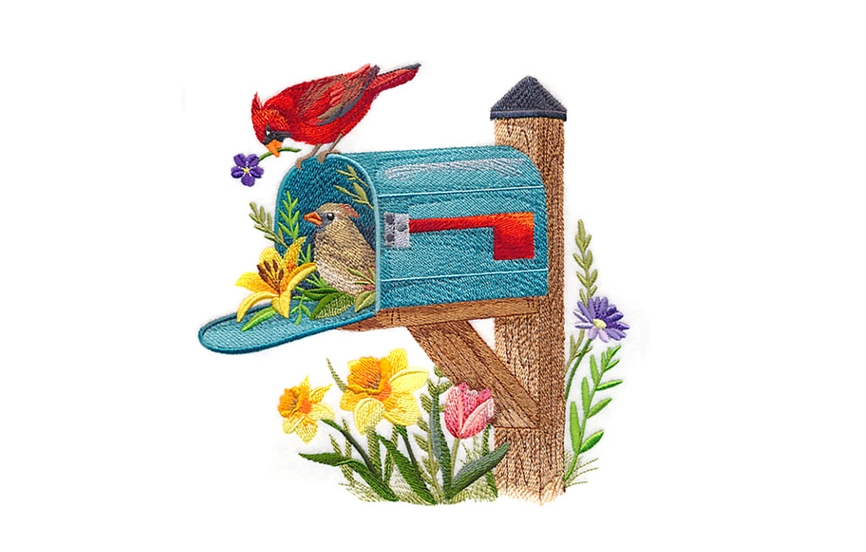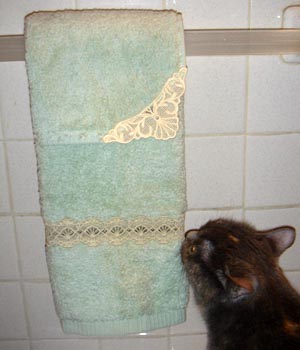
Turn ordinary bathroom linens into extraordinary, eye-catching decor--perfect to put out for guests or for personal use.
In just a few steps (and with the help of a cute little kitty) we'll show you how to add lace insets and corners to towels and washcloths.
Supplies
Supplies:
**Hand towel
**Washcloth
**Water-soluble stabilizer
**Dry-erase pen
**Paper towels
Designs Used:
Seashell Scallop Border (Lace) - Lg
Seashell Scallop Border (Lace) - Sm
Seashell Scallop Corner (Lace)
Special Project Notes:
You can use either 40 weight rayon thread or 30 � 35 weight cotton thread.
I use Coats and Clark 30 and 35 weight cotton thread. It's labeled as Mercerized ELS Cotton for Machine Quilting & Crafts; Machine Quilting; or All Purpose. I find Coats and Clark cotton thread at JoAnn's. I've also used Madeira Cotona, which is a 30 weight cotton thread.
I use the 30 - 35 weight cotton thread both in the bobbin (I wind my own bobbins) and in the top (needle).
A note about water-soluble stabilizers and needles:
There are many, many different brands of water-soluble stabilizer available. Some are thin and light, some are fibrous, and some are thick and heavy. It can be confusing to pick the right one for your lace project.
We've digitized and stitched thousands of freestanding lace designs, and have consistently excellent results with Sulky Ultra Solvy (the heavy weight water-soluble stabilizer by Sulky) and Vilene, a fibrous water-soluble stabilizer. We order Vilene from www.pointetopointe.com.
Use a sharp needle (as opposed to an embroidery needle) when embroidering onto water-soluble stabilizer - especially if using the "plastic-looking" kind (such as Sulky Ultra Solvy). An embroidery needle has a larger point, which makes larger holes in the water-soluble stabilizer, leading to tearing and misalignment.
Designs Used
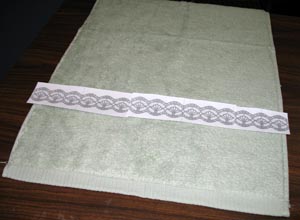
First, we will print templates of the designs from embroidery software. If you don't have software, make a template by tracing the designs sizes and approximate shapes onto paper.
To determine how many borders you will need to fit the width of your towel, lay out the hand towel and position the border templates across it. To reach across the towel, we needed two large borders and one small border.
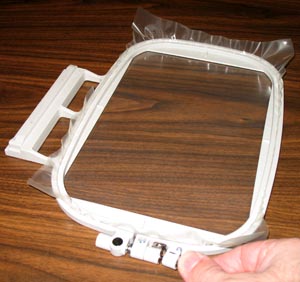
Embroider the lace designs. Hoop one piece of water-soluble stabilizer (WSS).
We use Sulky Ultra Solvy. Kenny tested different brands of WSS to see which works best with freestanding lace. To see how different brands hold up when used with freestanding lace, click here.
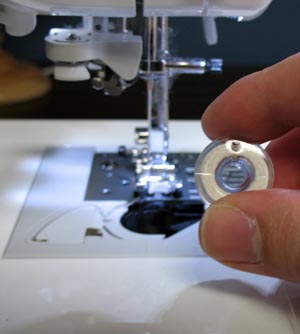
Because freestanding lace is two-sided, the bobbin thread should match the top thread. Wind a bobbin with the same thread that you'll be using in the needle.
We used 30-35 weight cotton for a hearty, yet soft look and feel. You can also use 40 weight rayon or polyester.
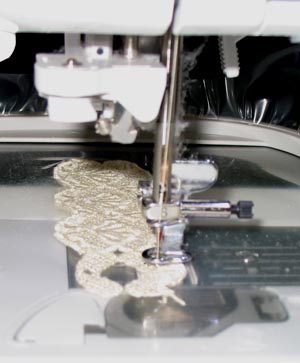
Embroider the designs.
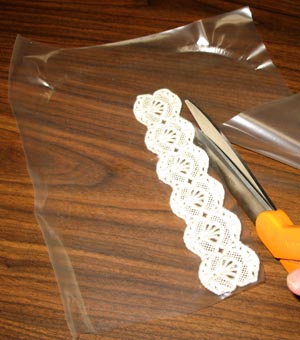
After finishing each design, unhoop the WSS and cut away the excess. Trim as close to the embroidery as possible without cutting any of the stitches.
Set the scraps of WSS aside. You can piece the larger pieces together by wetting your fingers and running them along the edges; or put scraps in a spray bottle and add water to make spray starch.
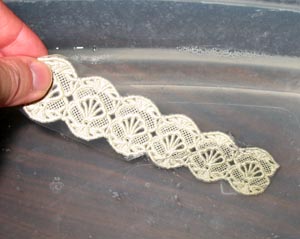
Soak in water, hot from the tap, for about 15 minutes, or until the stabilizer is soaked away.
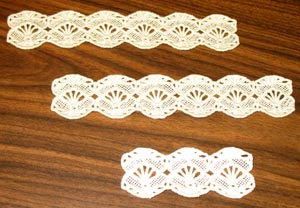
Blot any excess water from the lace with a paper towel, and then allow to it dry.
Press the lace with an iron.
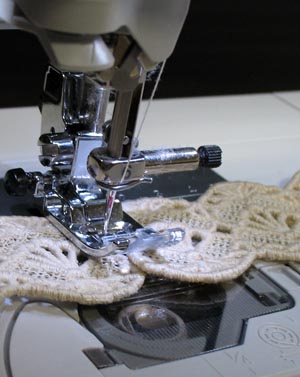
Now we will sew the lace borders together. Place each piece end to end and sew the ends together using a zigzag stitch. Use the same color thread as the lace.
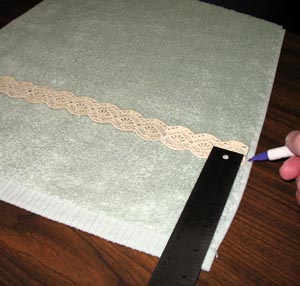
Once we've sewn the lace pieces together, it's time to determine where the lace will be inset into the towel.
Position the lace onto the towel where you would like the it to be. Using an air-erase pen, mark on one side of the towel in the center of the lace strip. Then, measure the distance between the center of the strip and the bottom edge of the towel.
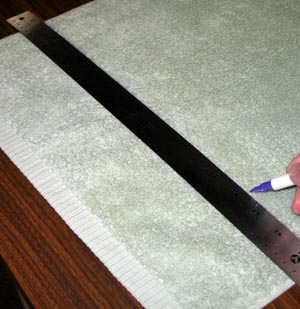
Mark the other side of the towel with that measurement and connect the two marks by drawing a line across the towel.
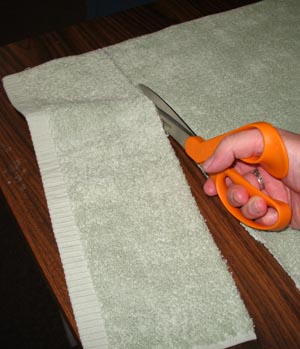
Cut the towel into two pieces by cutting along the edge.
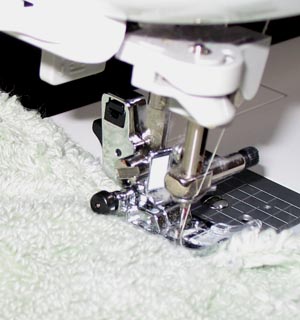
Next, hem each "raw" edge of the towel pieces by folding a 1/4 inch hem to the back sides and sewing a straight stitch along the edge.
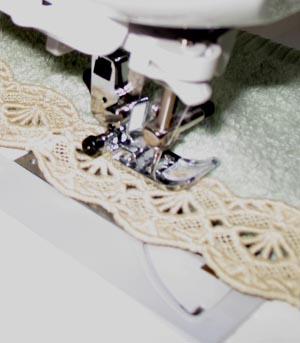
Next, we will sew the lace to the towel. Align the lace along one of the hemmed edges with the lace and the towel right side up.

Sew the remaining piece of towel to the opposite side of the lace as you did the first piece.
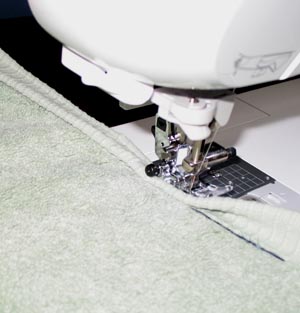
Now, let's add lace to the corner of a washcloth to make a matching set. The washcloth we chose had a wide band on two sides.
To even the sides, which will give the washcloth a more finished look, we hemmed each of the bands by folding each one to the back and stitching them in place.
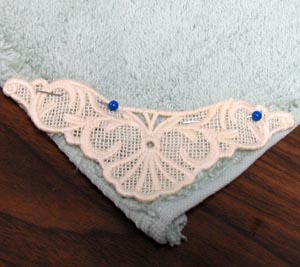
Next, embroider the lace corner as you did the for the lace borders. When the lace is dry, align it onto one of the corners of the washcloth. Pin in place.
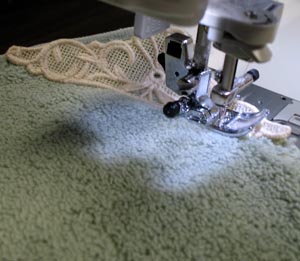
Attach the lace to the washcloth by using a straight stitch. Sew just inside the lace border form corner to corner.
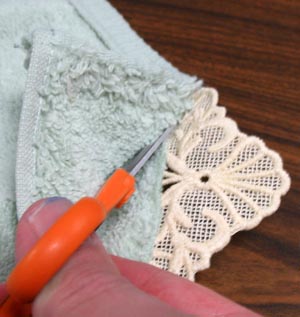
Finally, turn the washcloth over and carefully trim the corner away by cutting right next to the stitching.
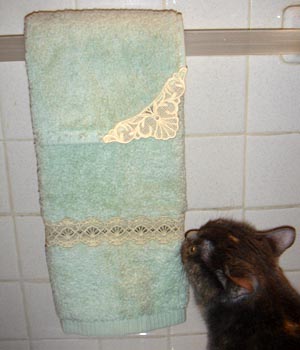
And there you have it -- a simple, yet elegant set for your bathroom or even a house-warming gift.
Natasha, Kenny's kitty, gives this project two paws up!

